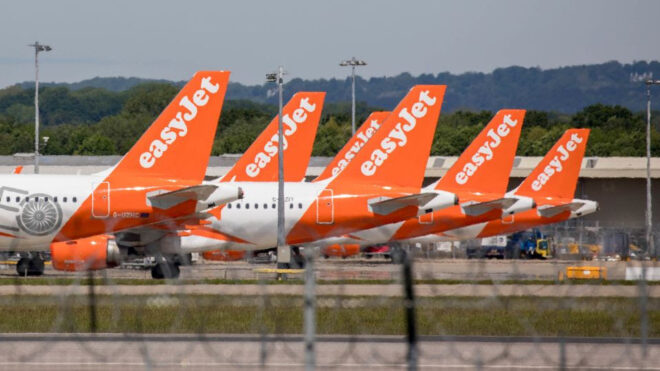
As incidents of in-flight turbulence continue to rise, another airplane has had to divert after a sudden bout injured those onboard.
EasyJet flight 8210 from Corfu to London Gatwick on August 19 was forced to divert to Rome, when turbulence over Italian airspace injured two crew members.
Another plane was sent to collect the distressed passengers, who eventually arrived in the UK the same day.
The seatbelt signs are believed to have been on when the plane encountered turbulence, and no passengers were injured.
A spokesperson for EasyJet said in a statement: “Flight EZY8120 from Corfu to London Gatwick on 19 August experienced turbulence which unfortunately resulted in two cabin crew members being injured. As a result the Captain took the decision to divert to Rome where the crew members were met by medical services.
“The safety and wellbeing of our customers and crew is easyJet’s highest priority and our pilots are trained to manage incidences of turbulence.
“The flight landed normally in Rome where customers were supported in the terminal and a replacement crew and aircraft were arranged to continue the flight to London Gatwick.”
The spokesperson declined to say whether the injured crew members were able to return to Gatwick alongside the passengers.
The Airbus A320 reached speeds of 500 knots (575mph) and altitudes of 31,000 feet during the abortive 75-minute flight.
Italy’s national aviation safety agency, the Agenzia Nazionale per la Sicurezza del Volo, said in a statement that the flight had hit the turbulence as it entered Italian airspace.
“Given the type and severity of the injuries sustained… ANSV has ordered the opening of a safety investigation classifying the event as an accident,” it said.
Southern Italy has been hit by stormy weather this week. Hours before the plane made its diversion, the Bayesian yacht sank in Sicily, after a waterspout – a kind of tornado – is thought to have hit it. Six passengers are still missing.
Acrording to data from flight tracker website Flight Radar 24, the aircraft has remained at Rome’s Fiumicino airport and has not yet re-entered service.
In nonfatal accidents, turbulence is the leading cause of injuries to flight attendants and passengers, according to the Federal Aviation Administration, and it’s one of the most common airline accident types today, according to the US National Transportation Safety Board. It costs US airlines – due to injuries, delays and damages – up to $500 million per year, according to the National Center for Atmospheric Research.